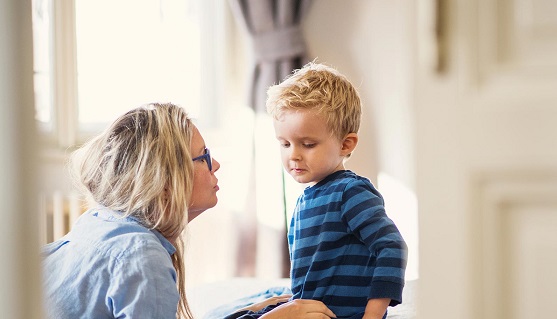Teaching children about body autonomy and personal boundaries
The education and protection of children requires that they be made aware of the autonomy of their bodies and the limits of their own personal space.
It is critical that children have a firm grasp of their rights and the limits placed on them at an early age in a society that places a premium on giving and receiving consent and recognizing the importance of personal space.
In this article, we will discuss the significance of instructing children about body autonomy and personal boundaries, offer suggestions for how these talks might be approached in a practical manner, and highlight the requirement for resources that are free of plagiarism to guarantee that children are provided with accurate information.
The Importance of Instilling a Sense of Personal Boundaries and Autonomy in Children
It is crucial to teach youngsters about personal boundaries and the autonomy of their bodies for a number of reasons:
Children are given the ability to make their own decisions and have control over their own bodies as a result of this, which helps them develop their self-confidence and self-esteem.
Children are provided with the knowledge and language skills necessary to identify and report improper or abusive behavior, which aids in the prevention of child abuse.
Respect and Consent: By assisting youngsters in developing an understanding of the principles of respect and consent, it enables these young people to engage in healthy relationships.
Communication Skills: It promotes open communication between children and trusted adults, which makes it simpler for youngsters to ask for assistance or guidance when they require it.
Setting limits: This activity teaches children the significance of establishing and honoring their own personal limits, which is an essential component of maintaining successful relationships with other people.
Methods That Can Be Used To Teach Personal Boundaries And Autonomy Of The Body
The following are some useful methods for instructing youngsters about personal boundaries and the autonomy of their bodies:
Discussions That Are Age-Appropriate It is important to tailor discussions to the child’s age and maturity level. When talking to younger children, use simple language, but when talking to older children, use language that is more nuanced.
Employ Appropriate Terminology: In order to encourage open communication and lower levels of shame, teach children the correct names for the parts of their bodies.
Education Regarding Consent Emphasize that consent must be voluntarily provided, informed, enthusiastic, and revocable at any time while explaining the notion of consent using examples that are appropriate for the learner’s age.
Teach your children the significance of respecting their own privacy as well as the privacy of others, such as by teaching them to knock on closed doors and to seek permission before touching another person.
Inspire and motivate Encourage youngsters to say “no” in a firm and confident manner if they are made to feel uncomfortable or whenever someone is pushing the limits of their boundaries.
Scenarios for Children to Practice Setting limits and Dealing with unpleasant Situations Practice scenarios with children where they can practice setting limits and dealing with unpleasant situations.
Helping Children Recognize Trustworthy Adults Teach your kids to recognize adults they may turn to for advice or comfort if they are afraid or need to discuss appropriate limits.
Teach children to recognize the difference between respectful and disrespectful touches, as well as the significance of sharing their experiences with a responsible adult if they are subjected to the latter.
It is crucial to give children with resources that are original and free of plagiarism while teaching them about personal boundaries and the sovereignty of their bodies:
material That Can Be Trusted You should make sure that the material you present is based on reliable sources such as organizations that safeguard children or specialists in child growth and development.
Content Appropriate for Children’s Ages Make sure the content you use is appropriate for the child’s age and level of comprehension. Stay away from material that is overly complex or graphic.
Be wary of plagiarized or unconfirmed information, as it may lead to misunderstandings and insufficient direction if you use it. Also, take care to avoid misinformation.
The final word
Teaching young children about the autonomy of their bodies and the importance of setting personal boundaries is an essential component of equipping them to navigate the world in a manner that is both safe and courteous.
Children can be empowered to defend their rights, create healthy boundaries, and contribute to a culture of respect and consent when we acknowledge the relevance of these conversations, provide practical assistance, and ensure that our educational materials are free of plagiarism.
Let us collaborate to ensure that every child is equipped with the information and the self-assurance necessary to defend their right to personal space and their health.

